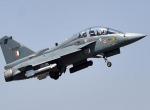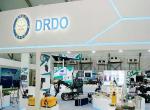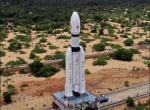Behind the successful 2013 test flight of Antares rocket –designed and developed by the US private space enterprise Orbital Sciences Corporation— at Mid-Atlantic Regional Spaceport (MARS) on Wallops Island in Virginia, there was a tale of “Soviet connection.” This two stage launch vehicle meant to help launch cargo resupply runs to the International Space Station(ISS), which will be in operational service till the end of this decade, features in its first stage an improved version of two N1 engine originally developed by the former Soviet Union as part of the strategy to race fast the American Saturn-V programme that constituted the cornerstone of the American manned missions.
Significantly, in early 2014, an Antares rocket carrying a commercially developed cargo ship made its first operational flight to ISS. Antares is also capable of providing low cost and reliable access to space for payloads weighing upto 6120-kg. Interestingly, Orbital acquired an improved version of N1 engine from the US firm Aerojet which had purchased 40 of the N series engines from Russia after the disintegration of the once mighty Soviet Union. ”The Soviet N1 booster had the highest lift off thrust of any rocket built in the history of space exploration,” notes Asif.A.Siddiqi, a US based historian of the Soviet space programme.
Interestingly, Russians could not put N-1 to operational use though it was developed as an answer to the American Saturn-V. As it is, a string of four failures of N-1 mega booster meant that the Russian dream of launching a cosmonaut to the moon went up in flames. Subsequently, the N-1 project was cancelled by a decree of the Central Committee of the Communist Party of Russia. N-1 had a massive cluster of 30 engines at its base. Incidentally, the cryogenic engine developed for N-1 ended up as the upper stage of India’s three stage Geosynchronous Satellite Launch Vehicle (GSLV) capable of placing a two tonne plus satellite payload into a geostationary transfer orbit. Under an agreement, Russia made available to India seven cryogenic engine stages for powering the flights of GSLV as a stop gap arrangement till India’s own cryogenic engine stage could take off.
Because of the complex technological challenges involved in the development of a cryogenic engine in late 1980s, Indian Space Research Organisation (ISRO) decided to acquire the cryogenic engine technology from Russia with the purpose of giving a quickening impetus to the development of GSLV, the first two stages of which are derived from the modules of the highly successful and reliable space workhorse Polar Satellite Launch Vehicle (PSLV). Accordingly, in 1991, ISRO entered into an agreement with the Russian federal space agency Glavkosmos for the supply of two flight ready cryogenic engine stages along with the transfer of critical cryogenic engine technology. But then in 1992, USA, citing the provisions of the so called Missile Technology Control Regime (MTCR), pressurised Russia that was just suffering the pangs of disintegration, to abandon its commitment of transferring the cryogenic engine technology to India. The stand of USA was that cryogenic engine technology has dual use potentials. But the ground reality is that cryogenic propulsion technology is not well suited for a missile system for the simple reason that the cryogenic fuel cannot be loaded on into the missile well in advance.
Under US pressure, Russia watered down the original agreement and as a face saving device decided to supply seven ready to use cryogenic engine stages to ISRO without any technology transfer. This was to enable India carry out GSLV flights till such time as an indigenous cryogenic stage gets ready. Following the denial of the cryogenic technology, ISRO launched its Cryogenic Upper Stage Project (CUSP) about two decades back. The mission objective was to realize a three stage launch vehicle capable of placing 2-2.5-tonne satellites into a geostationary transfer orbit. And thanks to the painstaking efforts of ISRO, the superb technological performance of the home grown cryogenic engine stage was convincingly demonstrated by the successful January 2014 flight of GSLV. Indeed, the flawless GSLV maiden flight featuring an Indian cryogenic engine stage was a slap in the face of the technology denial regime spearheaded by USA.
Evidently, a cryogenic engine stage is highly efficient since it makes available more thrust for every kg of fuel it burns in comparison to solid and earth storable liquid fuel driven rocket stages. A cryogenic stage is technically a very complex system in comparison to solid or earth storable liquid propellant stages due to its use of propellants at a very low temperatures and associated thermal and structural problems.
Meanwhile, Russia’s struggling space programme has projected a new multi billion dollar plan focussed on the development of a replacement for the obsolete and aging Soyuz cargo spaceship by 2020. This US$70-billion plan of the Russian space agency Roscomos also envisages the launch of new unmanned missions to the moon and beyond. Soyuz has remained the backbone of Russian space travel since its development in 1960s.One major setback suffered by the Russian space programme was the failure of the Progress-44 capsule meant to carry supplies to ISS .The Progress-44 carrying more than three ton of food supplies to ISS crew fell back to earth moments after its launch in August 2011, following the failure of a Russian Soyuz space vehicle.
The Soyuz became the world’s only manned link to the ISS following phasing out of the US space shuttle in July 2011. Against this backdrop, the Russian space agency’s outline called for the introduction of an “energy transportation module with a promising propulsion installation that will be ready for testing by 2018.” Roscosmos also said that it intends to “deploy a programme for detailed study of the moon and launch a series of unmanned missions for studying its soil samples.”
In what has been perceived as a major boost to the Russian space programme, President Vladimir Putin told the astronauts on-board ISS in 2013 April that Russia will send manned flights from its own soil in 2018 using a new ultra modern launch complex. Putin expressed the optimism that the upcoming launch pad will help the once pioneering space power explore deep space and the moon .In particular, he drove home the point that he wants the Vostochny cosmodrome to help Russia catch up with other powers in exploring beyond the near earth orbit. ”We are lagging behind the world in some areas. We have developed a noticeable gap from the leading space powers in the technologies of so called deep space exploration,” observed Putin.
Russia is planning to use Vostochny, located in the Far Eastern part of this former Communist empire, for launching a new generation of rockets carrying heavier payloads to rival its current launch site at Baikonur in Kazakhstan, the lease of which has been in contention since the 1991 break up of the Soviet Union. Baikonur cosmodrome in the steppes of Central Asia was the nerve centre of Soviet space launch activities. The first human to go to space, Yuri Gagarin made his pioneering space flight from here. However, the unresolved dispute over the lease terms continue to cast a shadow of uncertainty over its use by Russia.
According to Putin, the first launch from Vostochny will be in 2015 .The site, near Russia’s Pacific coast, was chosen to allow cosmonauts to splash down on water after their mission. “It is clear that in the 21st century, Russia must preserve its status as a leading space power,” said the Russian President. He also announced that the town being built around the new cosmodrome to house its engineers, researchers and their families would be called Tsiolkovsky in honour of the Russian scientist Konstantin Tsiolkovsky, who spearheaded rocket design in early Soviet era. There is no denying the fact that this new launch complex in eastern Amur region would enable Russia to shift much of the launches from the Baikonur cosmodrome. Russia leases Baikonur cosmodrome in Kazakhstan for U$115-million annually.
Putin also revealed that Russian space programme will get backed up substantially to the extent of US$52-billion over the next eight years. In 2011, Russia spent close to US$4-billion on its space program. However, the new push announced by Putin will imply that Russian space will get US$6.5-billion per year which means more than50% increase.
Between 2011 and 2013 Russian space programme had to sustain a series of failures and setbacks. Mishaps struck two Soyuz rockets in 2011, resulting in the loss of a military communications spacecraft and a Progress resupply ship heading for ISS. The once formidable Proton launch vehicle, which had come cropper in July 2013 with the three Glonass satellites it was carrying, turning into a ball of flame, however had its successful run in Sept.2013 when it launched a European telecom satellite. The July 2013 failure of Proton rocket was blamed on the placing of three rocket sensors in an upside down fashion. However, one of Russia’s most conspicuous failures was the loss of its Phobos-Grunt probe to Mars launched in 2011 which ended up crashing back into earth rather than coming close to completing its mission of visiting Martian moon. Indeed, this space flop has highlighted the infirmity of the Russian space progamme compared to NASA which in recent years had scored impressive success with its unmanned missions to Mars including Mars rover Spirit.
However, 2014 seems to have proved luckier to Russian space missions. In March this year, a Russian Proton-M rocket successfully launched two Russian telecom satellites. Prior to that in February, a Russian Proton rocket delivered Turkey’s domestic satellite Turksat-4A into its intended orbit.
Looking beyond its failures and setbacks, the Russian space programme has its vision focussed firmly on planetary missions. According to Oleg Ostapenko, Head of the Roscosmos Russian space agency developing technologies for robotic exploration of the moon and Mars is one of the important focus areas of the Russian space programme. The first mission named Luna-25 is slated for launch on the southern polar region of the moon in 2016. The next two missions will include an orbiter probe to monitor the moon in 2018 and a polar lander with a drill to search for water ice in 2019. Subsequent missions are planned to deploy robotic base on the moon and bring lunar soil back to earth for analysis.
Certainly there is no denying the fact that the landmark spaceflight of the Russian cosmonaut Yuri Gagarin strengthened the space leadership position of the erstwhile Soviet Union which had also to its credit the inauguration of the space age with the successful launch of Sputnik in October 1957. But in 1969, the USA took the then Soviet Union by surprise by successfully accomplishing the first human landing on the moon. The former Soviet Union had also proven its excellence in orbital complex technology. It is a tribute to the Russian mastery over the challenging technology of realizing an orbital complex that its Mir space station launched in 1986 continued to be operational till 2001. Incidentally, it was the world’s first and only permanently manned orbital outpost till the construction of ISS in 1998.Significantly, Russia had contributed to ISS with its Zanya module, technologies and expertise to build and operate an orbiting complex.
The plan to extend the operational life of ISS till 2020 has provided Russia an opportunity to boost its income by providing crew and cargo transportation service based on the Soyuz vehicle. As the US reusable space transportation system, the space shuttle, has been grounded, Russia’s reliable space workhorse Soyuz will be the only means of taking international crew to ISS. But then not long back Putin had observed, “Russia should not limit itself to the role of an international space ferry man. We need to increase our presence on the global space market which is roughly worth around US$200-billion”.
The high point of the Russian space programme is that it is developing a futuristic nuclear propulsion system for its proposed interplanetary missions. This is an area where Russia has a certain edge over the USA. According to Dr.Asif Siddiqi, Soviet space activities were essentially driven by militaristic ambitions and not due to the push provided by a well planned and centrally funded organizational set up. His thesis is that the Soviet space programme had an “accidental evolution” not because of the support from the Communist Government in Moscow but because of the vision of a few motivated individual scientists.
Clearly and apparently, Soviets did not have a long term space vision on the lines of the goals set by NASA. From launching Sputnik to sending its first cosmonaut into space, Soviets relied on modified versions of its ICBM (Inter Continental Ballistic Missile). But then the Achilles heel of the Soviet space programme was that the outfit which produced space systems and hardware also worked on missiles and defence devices. This resulted in a diffusion of focus on the space activities. Consequently, without a long term planning and sustained funding, the development of a high performance booster required to realize a manned flight to moon took a serious hit.
Before the break up of the Soviet Union, Russians had carried out a number of tests for developing a reusable space vehicle called Cosmolyot and a heavy lift off Energia vehicle as the most powerful and versatile booster developed anywhere. However, following the political turmoil and economic crisis that accompanied the break up of this mighty communist empire, Cosmolyot and Energia programmes came a cropper. But then the world cannot forget the innumerable space records set by the former Soviet Union which included the launch of the first animal, the first man and the first woman into space. Similarly, the first space walk was undertaken by a Soviet cosmonaut. The first pictures of the moon’s hidden sides were shot by an orbiting Soviet spaceship.
Meanwhile, in an interesting development, researchers of Russian Space Forces are working on developing an unmanned reusable space vehicle somewhat similar to American X-37 orbital vehicle now being developed by Boeing for United States Air Force (USAF). In the ultimate analysis, Russia is working hard to push ahead with its projects meant to reclaim the space glory of Soviet era.
In a major shift in its launch strategy, Russia’s new manned spacecraft will now be launched by means of Angara -5 rocket, originally developed for unmanned missions. The country’s new cosmonaut spacecraft getting ready for its maiden flight test in 2018, which was to have been launched by another rocket named Rus-M, will now be orbited by Angara-5. The Angara rocket will replace the existing launch vehicles including heavy lift off Proton to become the core of Russia’s unmanned launch fleet. Russia’s state space research and production centre Khrunichev is also developing a super heavy lift Angara-7, capable of orbiting payloads of 45 to 75 tonnes and for which there is no equivalent in Russia’s current rocket fleet. The main aim of the Angara family of rockets is to help Russia minimize its dependence on Baikonur cosmodrome. In addition, Angara will help Russia meet its diverse launch needs. South Korea’s Naro-1 rocket uses an Angara RD-151 engine as its first stage. Meanwhile, preparations are on for the debut flight of Angara, considered the first new big rocket since the end of Soviet era.
Published Date: 9th April 2014, Image source: http://en.ria.ru







Post new comment